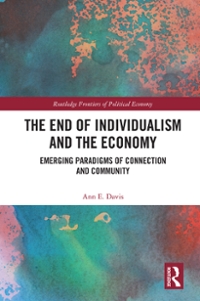Kindly solve the following questions.
8. Find a limit point for the set {-1 : ne ( ). Bolzano 9. Let A = {-1 : ne N}. a) Find A in R. b) Explain why A is a compact subset of H. 10. Let X be a compact topological space and let 7 - {F1, F2, F3, ...} be a class of closed sets such that (1 7 = 0. Prove that there is a number N such that Fin FinFin ... FN = 0. [Hint: De Morgan] 11. Prove The Maximum Theorem: Let f: [a, b] > IR be continuous, then f(x) obtains a maximum value for some x e [a, b]. [Hint: There is some [c, d] containing f([a, b]). ] 12. Let K be a compact subset of a Hausdorff space X and let pe K'. Prove that there exists disjoint open sets G and H of X such that peG and K C H. [Hint: See the proof of Theorem 2.] 13. Let A and B be disjoint compact sets in a Hausdorff space X. Prove that there are disjoint open subsets G and H of X such that A c G and B C H. [Hint: Use Exercise 12.]EXERCISES 1. Decide which of the following spaces are compact. If practicable, sketch a picture of the space. The set R of real numbers, the plane R?, or any sub- space of these spaces will be assumed to have the usual metric topology. Products will have the product topology. *) (0, 1) X [0, 1] bj C X R, where C - {(z, y) ( x' + y" = 1} cR () ((, vz) |itytz = l}CR d) ((, y) |x'ty4 0, J(z) = 0 if z = 0. Prove that f is not continuous. [Hint: Suppose f is a continuous function from a compact space X onto a compact space Y. Define Gy - {(z, y) | y = f(z)). Prove that if is continuous, then Gy is a closed subset of the product space X X Y. The proof through Proposition 10. Chap-Question '1' An investor purchases 1013 nominal of a xed interest stock, which pays coupons of ?% pa halfyearly in arrears. The stock is redeemable at par and can be redeemed at the option of the investor at any time between 5 and 10 years M the date of issue- The investor is subject to tax at the rate of 40% on income and 25% on capital gains. (i) Calculate the price that the investor should pay in order to obtain a net yield of at least % pa- [6] (ii) Given 1at this was the price paid by the investor, calculate his net annual running yield. [1] [Total Tr'] Question 52 A woman purchased a government bond on 1 January soon. The bond pays coupons of 6% pa six monthly in arrears on 3!} June and 31 December. The bond is due to be redeemed at 105% at the end of the year 2010. The woman expects to achieve a net yield of 5% pa e'ective interest on her investment. She pays income tax at the rate of 23% on 1 April for any coupon payments received in the previous year (1 April to 31 March). She also pays capital gains tax on that date at the rate of 40% on any capital gains she realised in the previous year. Calculate the price she paid for the bond- [Tr'] Consequently, (0, 1) is not compact. a educible to a finite subcover for (0,1). Compactness in Hausdorff and Metric Spaces In order to recognize sets as being compact we will need to characterize them more simply than by trying to employ the definition. Our first theorem actually doesn't immediately help with characterizing compact sets, but it helps to be able to recognize compact subsets of already known compact sets. Theorem 1: If K is a compact set in X, and let F is a closed subset of K, then F is compact. Proof: Let @ be an open cover for F. Augment @ with the open set X \\ F to a produce a cover Ci for K. Since K is compact it admits a finite subcover of , say (CI, C2 , ... , Ck, X\\ F ). Then (Ci, C2, ..., Ck) clearly covers F. Theorem 1 may not characterize compact sets, but it drops a hint that being closed may be important. The following theorem verifies that impression. Theorem 2: If X is a Hausdorff space and K is a compact subset of X, then K is closed. Proof: Let p e K'. Since X is Hausdorff, for each point q in K there are disjoint open sets Go and H. such that p e G. and q e Hq. Cover K with the set of all such He's. Since K is compact, there are a finite number of such that cover K, say HI, H2, ..., H.. So KE H, VH, V...UH.. Corresponding to HI, H2, ..., H. there are open sets Gi, Gz, ..., Gn containing p, where each Gk and Hi are disjoint. Therefore, Gin Gyn... Gn is open, contains p, and is clearly disjoint from HUHz ...UHn, . Since KE H, UH, V...UHn, we have that GinGin...n.G, is an open set, containing p, and disjoint from K. As p is arbitrary, K' is open. Metric spaces are Hausdorff spaces, and so we see that compact sets in a metric space are closed. Another property of compact sets in a metric space is easy to see. Theorem 3: Compact subsets of a metric space are bounded. Proof: Let K be compact in a metric space. Cover K with unit balls centered at each point of K. By compactness, a finite number of these unit balls suffice to cover K. Clearly, a finite set of










